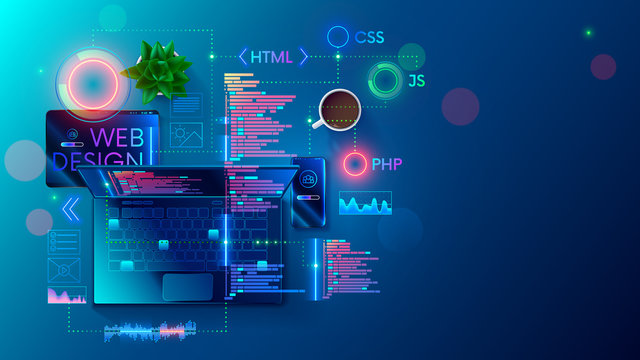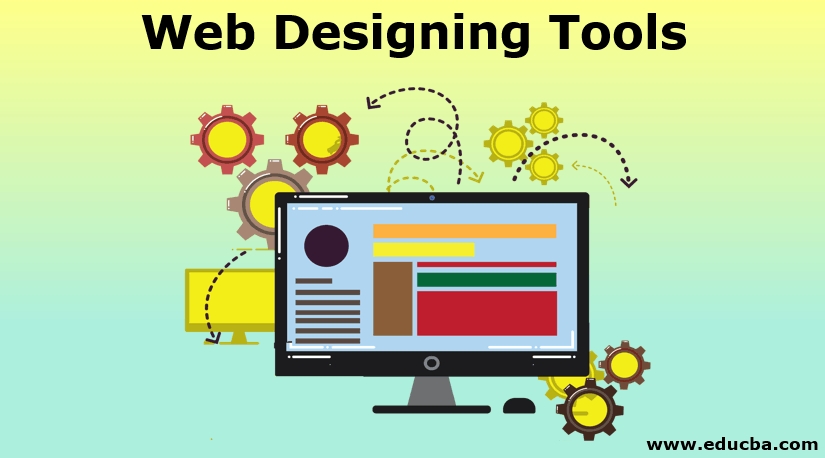Affordable Aligned Position Web Design: Top-Notch Web Design Services at Competitive Prices
The Ideal Types of Web Style to Improve Individual Experience and Engagement
In the ever-evolving landscape of digital interaction, the effectiveness of Web design significantly influences individual experience and involvement. Different layout strategies, such as minimal, responsive, and interactive formats, each offer special benefits that can provide to diverse customer demands.
Minimal Web Design
As electronic landscapes end up being significantly cluttered, minimalist Web layout has actually emerged as a powerful method to enhancing customer experience. This design ideology focuses on simpleness, focusing on essential elements while eliminating unneeded diversions. By making use of enough white room, straightforward navigating, and a restricted color palette, minimal layout fosters clearness and guides customer attention to vital content.
The core principle of minimal website design is to develop a smooth interaction for users. By minimizing cognitive load, individuals can quickly understand information without really feeling overwhelmed. This direct technique not just improves use but also encourages involvement, as visitors are much more most likely to check out a site that is aesthetically attractive and simple to browse.
In addition, minimal design frequently highlights typography and imagery, using these components tactically to communicate messages efficiently. In essence, minimal Web style is not simply a trend; it is a thoughtful technique that acknowledges the value of user-centered layout.
Receptive Web Layout
In today's varied digital atmosphere, receptive website design has actually become necessary for producing a seamless customer experience throughout a plethora of devices. As users access web sites on smart devices, laptop computers, tablets, and desktops, the capacity of a web site to adapt its design and content to different display dimensions and resolutions is essential.
Responsive Web layout uses adaptable grids, pictures, and CSS media inquiries to guarantee that Web content exists ideally, no matter of the gadget utilized. This strategy not only enhances the aesthetic charm of a web site however likewise considerably improves usability. Customers are more probable to engage with a website that uses a constant experience, as it eliminates the aggravation of needing to focus or scroll excessively.
Moreover, search engines, consisting of Google, prioritize mobile-friendly websites in search positions. By adopting receptive style, businesses can boost their exposure and get to a wider audience. This approach likewise streamlines website maintenance, as a solitary version of the website can accommodate all tools, decreasing the demand for numerous versions. In recap, responsive website design is an essential technique that improves customer experience, interaction, and total complete satisfaction.
Interactive Web Style
Receptive website design lays the foundation for boosting user experience, however interactive website design takes this a step additionally by involving users in a much more vibrant means - Aligned Position Web Design. By incorporating aspects such as computer animations, clickable models, and real-time feedback, interactive Web style astounds users, drawing them into a richer surfing experience
This strategy not only fosters interaction however additionally urges individuals to discover material actively instead of passively consuming it. Techniques such as gamification, where individuals gain benefits for finishing tasks, can significantly enhance the time invested on a website and boost overall contentment. Interactive features can streamline intricate info, making it a lot more absorbable and satisfying.

Integrating interactive layout aspects can additionally result in greater conversion rates, as individuals are more likely to involve with a site that actively includes them. Aligned Position Web Design. Ultimately, interactive website design transforms individual experiences right into memorable trips, guaranteeing that visitors return time after time
Apartment Design
Defined by its minimalistic strategy, level design emphasizes simplicity and performance, stripping away unnecessary aspects and concentrating on crucial features. This design viewpoint prioritizes functionality, making sure that individuals can browse user interfaces easily and efficiency. By employing a clean aesthetic, flat style gets rid of the clutter usually located in more ornate styles, thereby enhancing user concentrate on material and performance.
The trademark of level style Discover More exists in its usage of vibrant shades, simple typography, and geometric shapes. These elements add to an aesthetically attractive interface that is both friendly and contemporary. Additionally, flat layout cultivates a feeling of clearness, enabling individuals to discern essential activities and information without distraction.
Additionally, flat layout is particularly efficient in responsive Web style, as its simpleness equates well throughout various gadgets and screen dimensions. By concentrating on important attributes, level design not only satisfies individual needs however also encourages smooth communication, making it a crucial component of effective Web style techniques.
Adaptive Web Style
Adaptive Web layout tailors the customer experience by developing multiple repaired designs customized to various display sizes and devices. Unlike receptive layout, which fluidly changes a solitary format, flexible design utilizes distinctive formats for particular breakpoints, ensuring optimal presentation on different systems. This strategy allows designers to focus on the special features of each device, enhancing use by supplying specifically what customers require based upon their context.
Among the main advantages of adaptive Web design is its ability to optimize lots times and efficiency. By offering customized material and images that fit the user's device, websites can minimize information use and enhance loading rates. This is especially valuable for customers with slower links or restricted data strategies.

In addition, flexible design promotes a much more consistent and regulated branding experience. Since developers create several formats, they can make sure that the visual aspects align with the brand name's identification across various platforms - Aligned Position Web Design. This leads to a cohesive customer experience, improving engagement and advertising individual retention
Conclusion
To conclude, the assimilation of minimal, responsive, and interactive website design principles considerably boosts user experience and interaction. Minimalist layout fosters clearness and focus, while receptive style makes certain flexibility across different tools, promoting accessibility. Interactive layout mesmerizes users via dynamic components, urging exploration and personalization. Collectively, these design approaches contribute to the creation of user-friendly environments that not only improve fulfillment however likewise drive greater conversion rates, highlighting their important value in modern Web design techniques.

Minimal layout fosters clarity and focus, while responsive design guarantees versatility more info here throughout numerous tools, advertising accessibility. Collectively, these style approaches contribute to the creation of easy to use settings that not just boost fulfillment yet additionally drive greater conversion prices, highlighting their important value in modern Web learn the facts here now style methods.